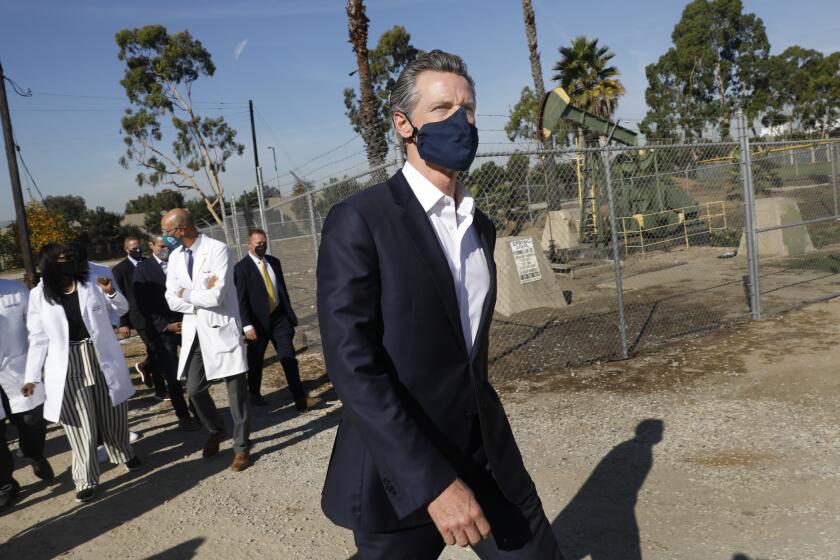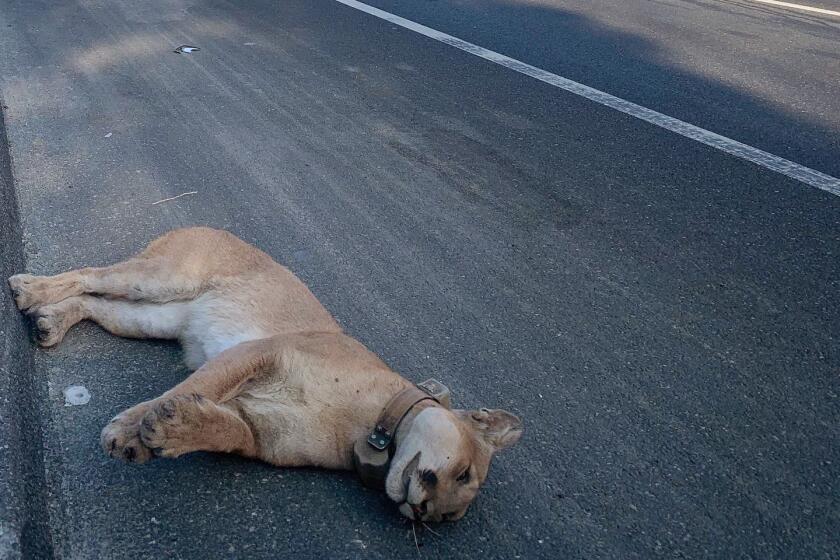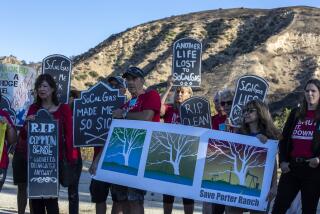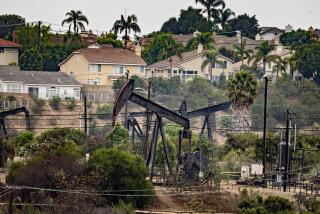Editorial: L.A. is right to phase out oil drilling, but communities can’t wait 20 years

- Share via
Los Angeles last week took a big step toward ending oil and gas drilling in the city by releasing a 20-year phaseout plan that could be enacted by year’s end. This is a laudable measure in the fight against climate change and environmental injustice, but without additional action it is too slow to bring meaningful relief to residents close to working wells.
The ordinance would use the city’s land-use authority to immediately prohibit new drilling and require all existing wells to cease operations within two decades. It’s a milestone, putting in sight the end of an era in which fossil fuel companies are allowed to extract oil wherever they want, next to schools, hospitals, sports fields and bedroom windows. These dangerous operations have harmed people’s health and well-being for too long.
Ending oil drilling is a climate and public health imperative for a city that, even after more than a century of extraction, still sits on top of 1.6 billion barrels of recoverable oil that must be kept in the ground to protect the planet. It would have been unthinkable not long ago in a city shaped by petroleum extraction since Edward Doheny first struck oil in 1892 in what is now Echo Park. That discovery set in motion an oil boom that studded the landscape with derricks and propelled L.A.’s growth into the nation’s second-largest city.
We know better now, and it’s time to put an end to fossil fuel extraction’s effects on largely low-income communities of color that have long endured the health consequences of living near drilling operations. That’s why it’s important that the city work to shorten the timeline for the shutdown of existing wells. It could be more meaningful to residents than an end date in the 2040s.
California aims to ban new oil and gas drilling near homes and schools, but to improve health in pollution-choked communities it should end the practice.
The city’s Office of Petroleum and Natural Gas Administration and Safety is launching an amortization study into existing wells and drilling sites. The analysis, which will be conducted by a yet-to-be-hired consultant and could take up to three years to complete, will determine whether well operators have recouped their investments and could be forced to shut down much sooner than 20 years.
A similar but smaller study in Culver City found that the company operating wells in the city’s portion of the Inglewood Oil Field had recovered its investments. In 2021, that city banned new drilling and gave the company five years to close shop.
L.A.’s situation is significantly more complex, with more than 200 operators pumping from about 5,000 wells scattered across the city. About 2,000 wells are active or idle (most of the rest are plugged or abandoned), many concentrated in neighborhoods like Wilmington that cope with an onslaught of other environmental hazards. Living near drilling operations has been linked to health problems including asthma, preterm births, reduced lung function, headaches, nosebleeds and other symptoms. Those living near wells can’t wait two more decades for cleaner air and safer neighborhoods.
L.A. probably would not be on this path if not for the persistence of environmental justice and community groups that have spent more than a decade advocating for restrictions on urban oil drilling. A campaign that began as a demand for setbacks near homes and schools morphed in recent years into a more ambitious push to prohibit drilling citywide, an idea that gained traction among city officials. The council’s January vote to move forward with drafting of the ordinance was unanimous.
Though it’s a positive sign that the city is not waiting for the results of the amortization study to start the 20-year countdown for wells and for drilling, production and storage equipment to be removed, the city seems to be taking a cautious approach. Although the oil industry will likely sue to try to block the phaseout of its operations, officials need to work with urgency to ensure most wells are shut down as soon as possible. It seems likely that many wells have already generated enough income for operators to earn them a sufficient return on their investments, though action will depend on the findings of the amortization study. The average age of the city’s active and idle wells is 30 years, according to the city, with the oldest drilled in 1919, and the newest in 2019.
Four mountain lions have been killed this year trying to cross roads and highways near the Santa Monica Mountains. Let’s help them across the road with a new law.
As it moves toward hiring experts for the study of existing wells, the city’s oil and gas administration office is looking into prioritizing the hardest-hit areas, based on their scores in a statewide ranking of Census tracts most burdened by pollution. The city doesn’t need to wait for every well to be analyzed before acting. It should first focus efforts on communities that have suffered most from fossil fuel extraction and where the ongoing health risks are greatest.
For wells that are allowed to keep producing over the next few years, it’s critical that the city, air quality officials and state regulators hold operators accountable when they violate environmental rules or permit conditions that affect neighboring communities with noise and pollution.
L.A. also has the opportunity to help raise the bar for the rest of California, and the nation, in ending harmful fossil fuel extraction. Gov. Gavin Newsom’s administration is developing regulations to establish a statewide ban on new oil and gas wells within 3,200 feet of homes, schools and healthcare facilities, and last week the governor urged state lawmakers to establish such setbacks through legislation. But those buffer zones will have limited practical effect because they exempt existing operations.
People in L.A. and across the state need more than a far-off promise. They need these harmful drilling operations shut down as soon as possible.
More to Read
A cure for the common opinion
Get thought-provoking perspectives with our weekly newsletter.
You may occasionally receive promotional content from the Los Angeles Times.












